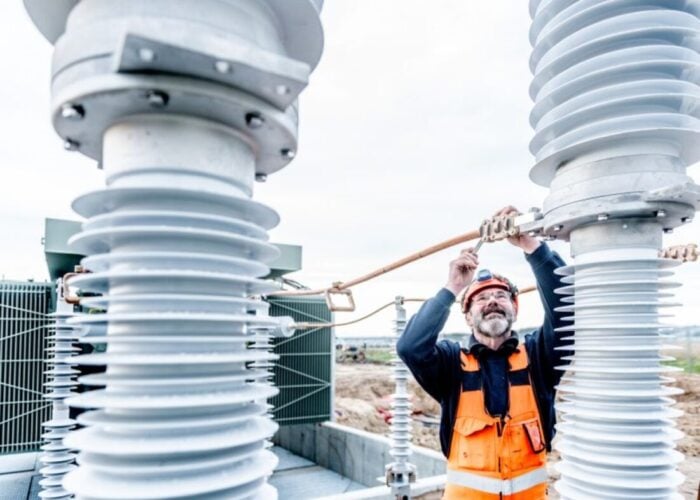
State-owned China Energy Investment Corporation (CHN Energy) has completed a 1GW floating solar PV facility in the Shandong Province of China.
In a statement released on Wednesday (13 November), CHN Energy said it had successfully connected the project to the grid, claiming it is the “first and largest of its kind in the world”. Its subsidiary, Guohua Energy Investment, completed the installation.
Unlock unlimited access for 12 whole months of distinctive global analysis
Photovoltaics International is now included.
- Regular insight and analysis of the industry’s biggest developments
- In-depth interviews with the industry’s leading figures
- Unlimited digital access to the PV Tech Power journal catalogue
- Unlimited digital access to the Photovoltaics International journal catalogue
- Access to more than 1,000 technical papers
- Discounts on Solar Media’s portfolio of events, in-person and virtual
The floating solar power plant is situated around 8km off the coast of Dongying City, on the eastern coast of China, adjacent to the Bohai Sea.
CHN said the project spans an area of around 1,223 hectares and features 2,934 solar PV platforms installed using large-scale offshore steel truss platform fixed pile foundations.
The floating solar PV project also includes a 66kV offshore cable paired with an onshore cable, marking a first for the Chinese market.
Additionally, the project utilises an integrated fishing and solar PV development model, combining fish farming with PV power generation to enhance the comprehensive utilisation of the marine area.
China’s focus on international floating solar PV
Floating solar PV continues to attract international attention. Last year, China Energy Engineering Corporation, another arm of China Energy, proposed building another 1GW floating solar PV installation in Zimbabwe. It is worth noting that Africa and China have grown increasingly closer politically, with China regarded as the continent’s largest trading partner.
The floating solar facility in Zimbabwe would be developed at the Kariba Dam on the Zambezi River, Africa’s fourth largest river. The river runs through Angola, Namibia, Botswana, Zambia, Zimbabwe, and Mozambique before it merges with the Indian Ocean.
According to a Reuters report, the project would involve US$987 million in investment. It would deploy around 1.8 million solar PV modules on the reservoir at the top of the Kariba Dam, the largest man-made lake in the world.
Domestically, China is also looking to increase its installed capacity of floating solar PV. Yet another arm of China Energy, CGN New Energy Holdings, commissioned a 400MW offshore solar PV project in August 2024. The facility would be located in the Laizhou Bay and is claimed to be the first large-scale deep-water offshore solar project in the country.
Also located in the Bohai Sea, near Zhaoyuan City to the east of Dongying City, the project covers 6.4 square kilometres and features 121 PV sub-arrays. Chinese module manufacturer Grand Sunergy provided its Seapower series of modules for the project, bifacial panels that use heterojunction (HJT) cells to maximise electricity output.
PV Tech Premium has previously analysed the changing technological profile of floating solar construction, and the most recent issue of our downstream journal, PV Tech Power, featured a deep dive into the future of offshore floating solar, from pilot projects to larger scale.







